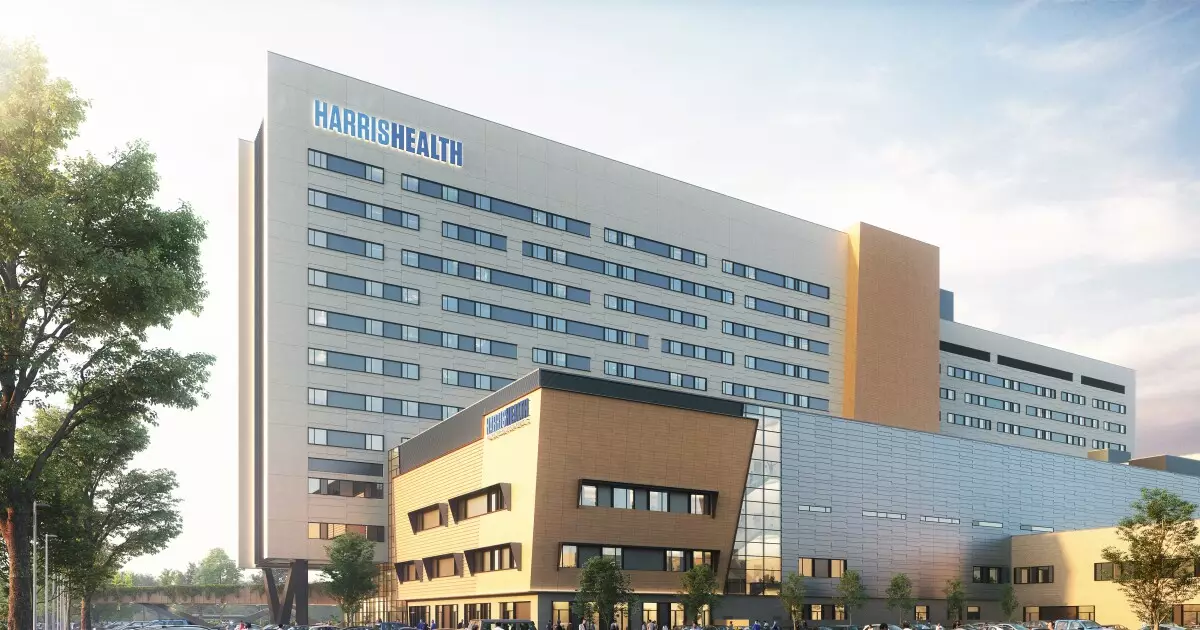In an audacious initiative designed to reshape the medical landscape, Harris County Hospital District, the principal healthcare provider for Texas’s largest county, has announced a groundbreaking decision to issue $839.5 million in limited tax bonds. This strategic maneuver is a first step towards tapping into the ambitious $2.5 billion debt authorization approved by voters in 2023. Undoubtedly, the critical nature of healthcare has never been more apparent, and this $3.2 billion expansion project represents a defining moment in public health investment, yet it raises several questions about fiscal responsibility and future ramifications for taxpayers.
The bond sale marks a significant financial undertaking, as it is expected to be mainly financed through debt issuance, supplemented by an estimated $700 million from both cash flow and philanthropic contributions. Delving into the funding mechanism, the bonds will be repaid through property taxes, governed by a stringent Texas constitutional cap that restricts tax rates to $0.75 per $100 of assessed property value. With a combined operations and debt tax rate of $0.16348 for fiscal 2025, the implications of rising debt costs loom large. The potential increase in the interest and sinking rate—from a modest $0.00136 to approximately $0.02—raises eyebrows regarding the sustainability of such financial commitments.
Taxpayer Burden and Economic Viability
While Moody’s Ratings has bestowed an impressive Aa1 rating to the bonds, attributing it to the expansive economic capacity of the county and its significant taxing headroom, it is crucial to analyze the underlying implications. There’s a staggering 42,000% headroom before reaching the tax rate cap, suggesting that there is considerable room to generate the necessary revenue for the district’s debt service. However, the project’s over-dependency on lenders and property taxes could create an undue burden on Harris County residents, especially as economic climates fluctuate. Residents could find themselves grappling with increased taxes that affect their daily lives and financial stability.
Moreover, while the rating agencies remain optimistic about the stability and capacity of the Harris County economy, they also allude to troubling external pressures that could jeopardize the district’s financial health. The looming potential cuts to federal Medicaid funding by GOP lawmakers, exemplified by prior budgetary restrictions, could severely impact the vital operational funds that correspondingly account for 73% of the district’s collections. In an already precarious funding landscape, this additional uncertainty complicates the district’s ability to maintain fiscal health as it endeavors to provide essential medical services to its mostly indigent and vulnerable population.
Population Growth Meets Healthcare Constraints
The urgency of this expansion project cannot be overstated, particularly in light of Harris County’s burgeoning population, which has grown by over 105,000 residents in just one year. As the county anticipates surpassing 6 million residents by 2050, the healthcare demands will undoubtedly increase exponentially. Harris County’s status as a safety net provider comes with inherent risks, and the county already grapples with these challenges, especially concerning its Medicaid population. The situation is further exacerbated by some segments of state governance that appear less welcoming toward Medicaid—a political stance that could add to the district’s struggles.
While Harris Health’s leadership emphasizes the importance of expanding healthcare infrastructure, one must question the sustainability of such a massive responsibility without concrete long-term federal support. With reports indicating that around 1.5 million residents will remain uninsured, the expanded facilities might merely serve to patch holes without addressing the foundation of the healthcare system.
Environmental Risks Amidst Ambitious Projections
Another dimension involved in this expansion project includes the recognition of climate risks. With Harris County’s proximity to the Gulf Coast, historical precedents of hurricanes and flooding signal that the new facilities must be engineered with resilience and sustainability in mind. While the health district claims to be investing in sustainable infrastructure and energy-efficient practices, the reality of climate change presents a formidable obstacle that could thwart recovery and operational functionality during catastrophic weather events.
The additional strain on resources, both financial and infrastructural, posed by natural disasters could undermine the very improvements that this bond intends to fund. District officials must not only plan for routine healthcare challenges but also proactively develop strategies to withstand environmental pressures.
The Bigger Picture: Navigating the Future of Healthcare
Ultimately, Harris County’s remarkable undertaking represents both a beacon of hope and a source of concern for taxpayers. The integration of community input via the voter-approved Proposition A signifies public trust, yet it is combined with uncertainties that cannot be ignored. As this ambitious healthcare project unfolds, stakeholders must engage in meaningful dialogue not only on funding approaches but also on the broader implications of public financing in healthcare delivery, community health standards, and economic growth. The path forward is fraught with challenges, yet the opportunity to redefine healthcare in Texas remains tantalizingly within reach, contingent on the effective navigation of impending fiscal and environmental obstacles.

